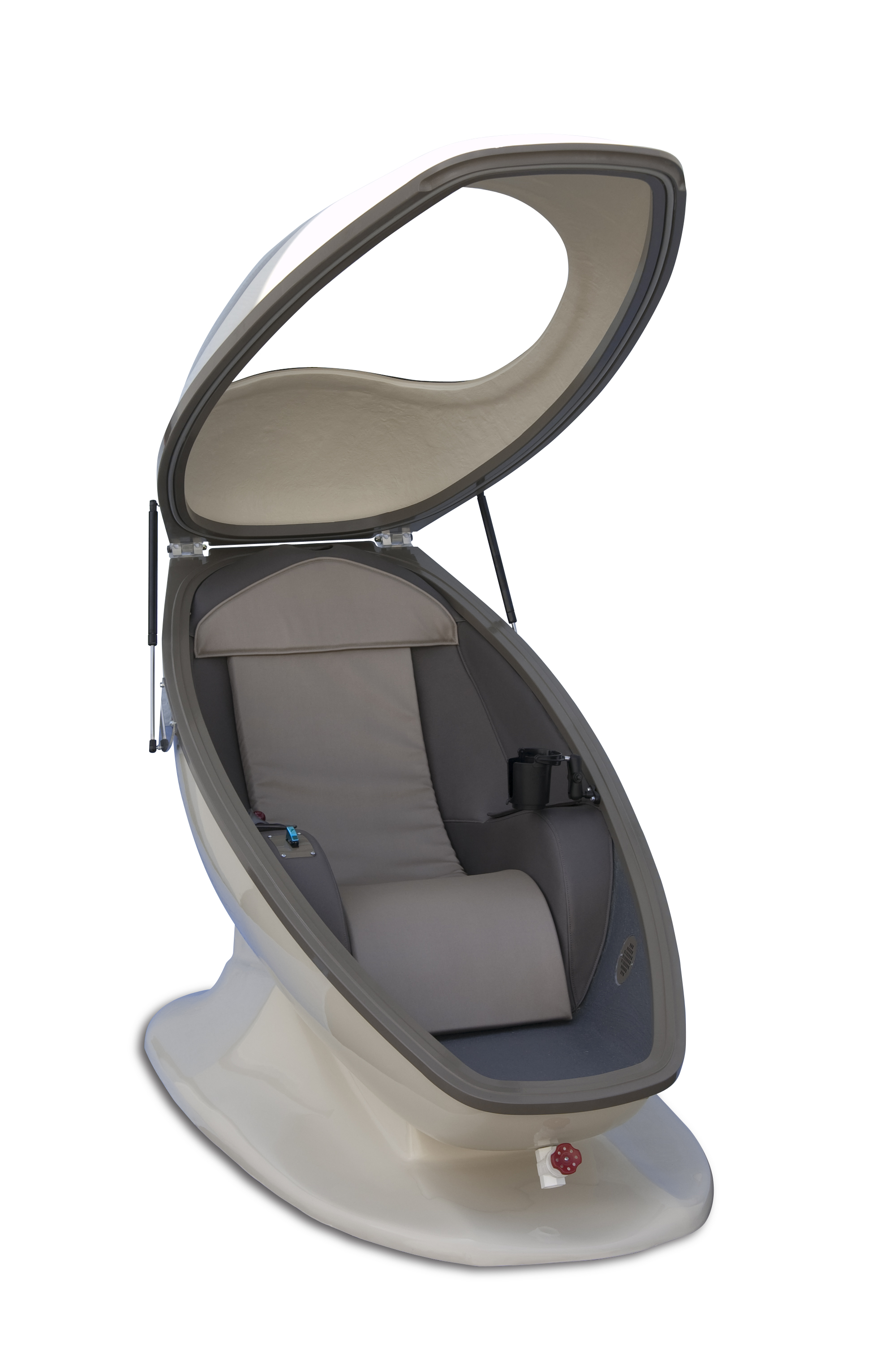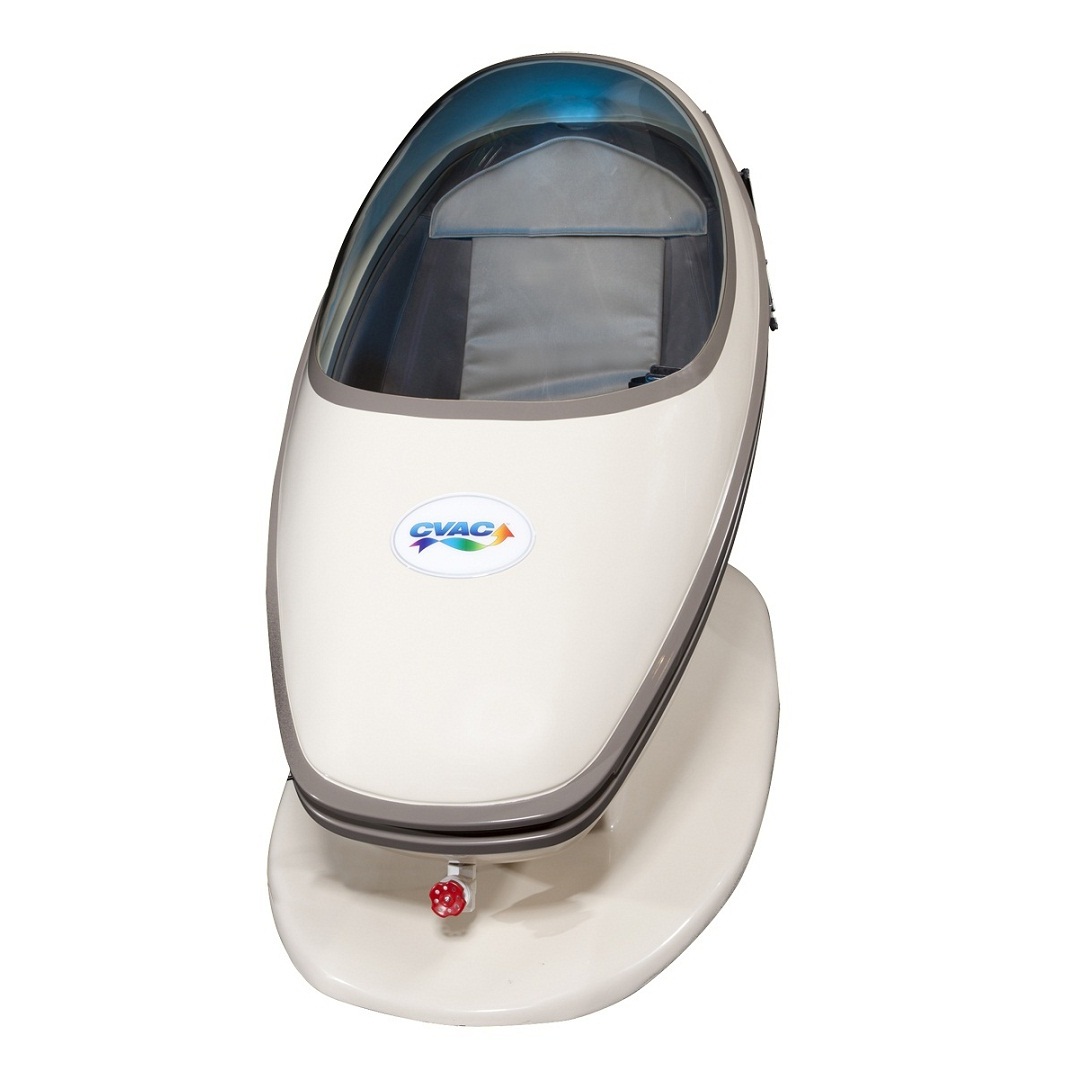BHRC – The CVAC Process
Welp, I just tried this and I have to say, it was so intense – that while I didn’t feel any different immediately afterwards, it must have done something on a cellular level as the pressure training was deep!
I had no idea what to expect during the process, other than from what I have read about CVAC – that it is the praised training of top athletes. Once I stepped into the pod and got a thorough training about what to expect, the pod closed and I worked with my tech guy to deal with the drastically changing pressure. I was told that a few weeks of this training, for longer and longer periods of time will help with several health and wellness concerns.
Expect ears popping, nose blowing and lots of anti-pressure breath work as you ascend and descend in pressure. The pod is cozy and you don’t feel claustro because there is a lot of light and air. Phew!
Beverly Hills Rejuvenation Spa (www.BHRCenter.com) is the leading medi-spa with locations not only in LA but also across the Country! I’m looking forward to trying some of their lasers as my summer skin transitions to fall and I need to slough and de-freckle!
Here is what it does, but please read below for all the benefits and some FAQ about it!
The CVAC (Cyclic Variations in Adaptive Conditioning) process is a patented methodology involving adaptations facilitated via the application of precisely composed rhythm-based changes to pressure, temperature and air density.
The pressure profiles require a person’s body to respond (adapt) similar to how that person would respond (adapt) to increased workloads of exercise training.
CVAC sessions provide an effort-free physical conditioning experience for people of all ages (3 weeks old to 99 years old, to date) and all levels of fitness (couch potato to a professional athlete).
The air pressure inside will fluctuate between sea level and about 22,500 feet, with 200-400 pressure changes between. The CVAC process helps improve overall fitness without the aggressive physical exertion often associated with traditional exercise.



Some benefits may include:
- Increased overall stamina
- Better recovery after exercise or other exertion
- Increased overall endurance
- Improved sleep
- Increased energy levels
- Improved overall health & wellness
- Reduces inflammation
- Reduced pain in subjects who suffered from a genetic pain disorder (per endocrinologist Dr. Karen Herbst’s pilot study)
- Improved glucose metabolism in subjects who were type-2 diabetic, and in those at risk for the disease (per Stanford pilot study)
- Significantly improved the oxygen-carrying capacity in athlete’s blood (per University of Hawaii study)
Dr. Karen Herbst, an endocrinologist at University of California San Diego
She sees the CVAC as a means to “replicate exercise” in a machine. The CVAC subjects the body to actual air-pressure changes, rhythmically squeezing and relaxing the whole human body; blood, organs, everything – similar to the way an empty plastic water bottle with its cap screwed on collapses in on itself when the simulated altitude goes up and the pressure drops, and plumps back out of the descent when the pressure rises back to normal. The effect, Herbst believes, is a stimulation of the lymphatic system, which then drains metabolic waste more vigorously, thereby reducing inflammation. This is how she explains the positive results she got in a 2010 pilot study, in which the CVAC reduced pain in subjects who suffered from a genetic pain disorder. Athletes, she says may get another benefit. The intermittent exposure to the low-oxygen, high-altitude pressure can create oxygen free radicals. In excess, they damage the body; in moderation, they signal the cells’ power plants, the mitochondria, to grow more robust. We get the same training effect on a good run, subjecting the body to the mild stress of operating at oxygen deficit, depending on how hard we push. “As with exercise,” Herbst says, “you’re stimulating all these stress pathways and, hopefully, improving the body’s entire metabolism to better handle the stresses of life.”
Is a CVAC pod the same as a Hyperbaric Chamber?
No, the two are not the same. The CVAC process involves a low-pressure (vacuum) environment. The hyperbaric chamber provides a high-pressure environment.
There is a simple analogy that can be taken into consideration to illustrate this difference. When you use a vacuum cleaner, you are employing hypobaric pressure. When you pump air into a car tire, you are employing hyperbaric pressure. Both instances employ pressure. The vacuum, low pressure. The tire pump, high pressure.
Hyperbaric chambers increase the pressure of oxygen being breathed. While in a hyperbaric chamber, oxygen is forced into the body due to the higher pressure. Most of the oxygen goes into the blood plasma. This condition persists only as long as the user remains in the chamber being subjected to the high pressure. In a way, it is like getting a high dose of oxygen (considered a medical gas/drug). During the exposure, the air can become stale if it is not being scrubbed properly (to remove the carbon dioxide). It is useful in some conditions.
The CVAC process offers a dynamic, continually changing range of low pressures. The air is always fresh and is never recirculated. As the oxygen level is mildly lower than normal, the pressure is continually changing and the temperature is changing as well, this allows the body to make adaptive changes to meet these challenges. This is never seen in hyperbaric chambers. You aren’t training anything in them. You are just dosing the body with oxygen. The CVAC process is an exercise that encourages the body to adapt toward an ability to thrive and survive at a higher level than before. Additionally, the adaptive effect continues to work even after the session is over. Just like exercise, the CVAC process has a cumulative effect.
Is a CVAC pod the same as high-altitude tents that athletes sleep in?
No, the standard high-altitude tents that some athletes sleep in as a training aid simulate only one aspect of living at higher altitude; the reduced amount of oxygen the body absorbs. The CVAC, on the other hand, subjects the body to actual air-pressure changes, rhythmically squeezing and relaxing the whole human body, blood and organs.
How does the CVAC process provide effort-free physical conditioning?
The pressure profiles (dynamically cycling changes in atmospheric pressure, temperature and air density) require a person’s body to respond (adapt) similar to how that person would respond (adapt) to increased workloads of exercise training. The resultant adaptations have similar effect on multiple metabolic pathways and cardiovascular fitness (refer to links below).
Another way to explain how the CVAC process is similar to exercise is that exercise represents a dynamic physical mechanism (external influence) for evoking homeostasis*. The CVAC process also represents a dynamic physical mechanism for maintaining homeostasis as a means of thriving.
A person (of any level of fitness) using the CVAC process to improve their fitness should look at it as a regimen of regular rhythmic use. Our rotations provide varied workloads, allowing continued improvement in fitness. Proper adherence to our method of sequential progression through the tier levels of the CVAC process ensures optimal levels of workload without risk of injury.
While in the CVAC pod, the occupant is exposed to mild-to-moderate, transient, pulsed low atmospheric pressure. To date, six Institutional Review Boards including those at Stanford University, University of California, San Diego and Florida State University have determined that the CVAC technology poses no significant risk; therefore the CVAC technology is considered safe.
We have data from University-based studies showing that resultant adaptations have effect on multiple metabolic pathways and cardiovascular fitness similar to exercise training (refer to the links below). We need more appropriate studies and research on the CVAC process, but the best proof one can supply for something like this is to engage in regular, rhythmic use of the CVAC process as many people who regularly taking CVAC sessions are becoming more adaptable, healthier, stronger and more limber.
Please don’t mistake the CVAC process for “altitude training” as many have done over the years. There are devices marketed for altitude training that titrate nitrogen to simulate high altitude. CVAC process exposures do not cause any acclimatization. Acclimatization takes many hours of daily exposures over multiple weeks, even months. All CVAC sessions are composed in a way that doesn’t allow for any hypoxic decompensation to occur.
* Homeostasis in a general sense refers to stability, balance or equilibrium. It is the body’s attempt to maintain a constant internal environment. Maintaining a stable internal environment requires constant monitoring and adjustments as conditions change. This adjusting of physiological systems within the body is called homeostatic regulation.
http://en.wikipedia.org/wiki/Human_homeostasis
Primary examples of homeostatic regulation in mammals include regulation of the proportion of water and minerals, removal of waste, regulation of body temperature and the regulation of blood glucose levels.
Improved performance & recovery for Athletes
We also market the concept of improved recovery, power and endurance to athletes. Competitive cyclists, runners, tri-athletes, tennis players, MMA fighters, Motor Sports racers, hockey players (and other athletes) are maximizing the outcome of their sport-specific workouts by adding the CVAC™ process to their training armament. These athletes regularly report great improvement in power and endurance that are consistent with findings of independent researchers, such as the scientific findings published in the peer-reviewed International journal, Wilderness and Environmental Medicine, 20, 26 32 (2009). In this study performed with athletes at the University of Hawaii, the CVAC process was shown to significantly improve the oxygen-carrying capacity of study subjects’ blood. Further, when athletes take CVAC sessions for recovery from maximal effort, hard training days, they are able to effectively maintain their fitness levels without contributing to the overtraining effect. We believe that this concept provides these athletes with more power (output) with less effort, and many other benefits to their performance.
How does a CVAC Session Feel
You will sit down, and relax inside a CVAC pod. Fresh air will move in and out, and you may feel pressure in your ears and changes in temperature around your body. The air will feel cooler as the pressure decreases, and warmer as the pressure increases. Experiences vary – many report feeling relaxed, and others feeling energized.
The initial session is Tier 1 which is the Acclimation Session and consists of 5 – 5 minute sessions. Then you advance to Tier 2 and the sessions are 20 minutes each. There are a total of 6 Tiers and you must complete at least 15 sessions in each Tier to advance to next level. Spending up to 20 minutes in the CVAC pod three times a week can boost athletic performance by improving circulation, boosting oxygen-rich blood cells, removing lactic acid and possibly even stimulating the mitochondrial biogenesis and stem-cell production.
For more information please contact:
Beverly Hills Rejuvenation Center
1860 Sepulveda Blvd.
Los Angeles, CA 90025
310.473.5800 Office
310.473.5801 Fax
